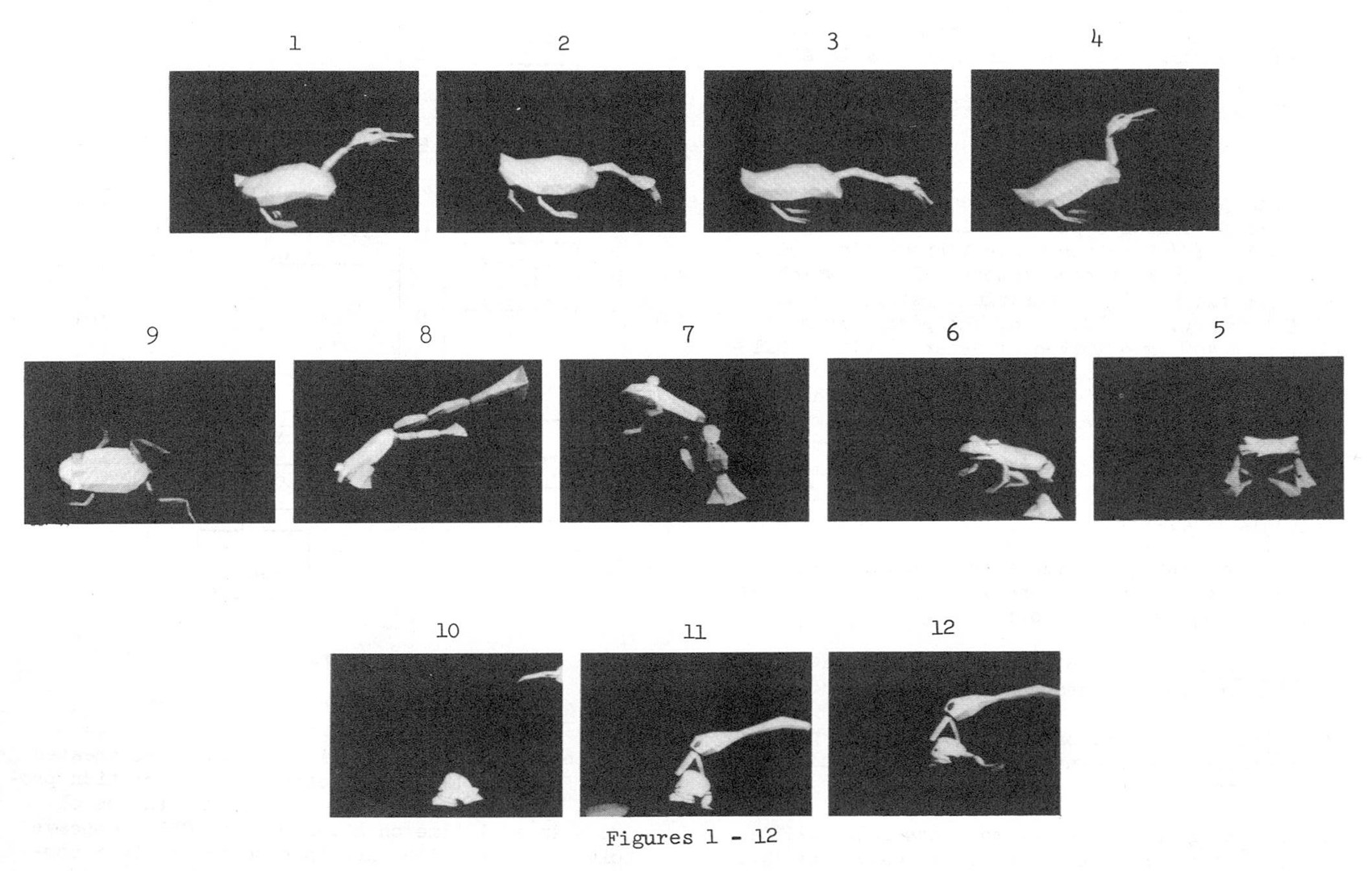“Anima II: a 3-D color animation system” by Hackathorn
Conference:
Type(s):
Title:
- Anima II: a 3-D color animation system
Presenter(s)/Author(s):
Abstract:
An animation software system has been developed at The Computer Graphics Research Group which allows a person with no computer background to develop an animation idea into a finished color video product which may be seen and recorded in real time. The animation may include complex polyhedra forming words, sentences, plants, animals and other creatures. The animation system, called Anima II, has as its three basic parts: a data generation routine used to make colored, three-dimensional objects, an animation language with a simple script-like syntax used to describe parallel motion and display transformations in a flexible, scheduled environment, the Myers algorithm used in the visible surface and raster scan calculations for the color display. This paper discusses the requirements, the problems, and the trade-offs of such a system. An overview of research in the area is given as well as the design and implementation highlights of the Anima II system.
References:
1. Appel, A., Stein, A., Landstein, J. (1970). The Interactive Design of Three-Dimensional Animation, Proceedings of the Ninth Annual UAIDE Meeting.
2. Archuleta, Personal Communication with CGRG.
3. Baecker, R. M. (1969). Interactive Computer Mediated Animation. Dissertation, Massachusetts Institute of Technology.
4. Baumgart, B. G. (1974). Geometric Modeling for Computer Vision. Dissertation, Stanford University. NTIS Report Number AD/A-002261.
5. Belady, L. (1970). TV Plus Computer Equals Videographics. Proceedings of the Ninth Annual UAIDE Meeting.
6. Blasgen, M. W., Gracer, F. (1970). KARMA: A System for Storyboard Animation. Proceedings of the Ninth Annual UAIDE Meeting.
7. Blinn, J. F., Newell, M. E. (1976). Texture and Reflection in Computer Generated Images. Communications of the ACM, Vol. 19, No. 10.
8. Braid, I. C. (1975). The Synthesis of Solids Bounded by Many Faces. Communications of the ACM, Vol. 18, No. 4.
9. Catmull, E. (1974). A Subdivision Algorithm for Computer Display of Curved Surfaces. Tech. Report UTEC-CSC-74-133, University of Utah.
10. Clark, J. (1976). Hierarchical Geometric Models for Visible Surface Algorithms. Communications of the ACM, Vol. 19, No. 10.
11. Csuri, Charles (1975). Computer Animation, Proceedings of the Second Annual Conference on Computer Graphics and Interactive Techniques–SIGGRAPH ’75.
12. Csuri, Charles A. (1977). 3-D Computer Animation. Advances in Computers. Academic Press, Inc., New York.
13. Davis, J. R. (1968). A Model Making and Display Technique for 3-D Pictures, Proceedings of the Seventh Annual UAIDE Meeting.
14. Elin, L. (1975). Synthevision: Serendipity from the Nuclear Age, Artist and Computer, edited by R. Leavitt, Harmony Press.
15. Elin, L. (1977). Presented at National Conference and Workshop on Electronic Music and Art, University of Buffalo, Suny.
16. Film — “Walking Man,” University of Utah.
17. Film — “NASA Space Shuttle” General Electric.
18. Film — “Sphere Eversion” N. Max.
19. Gattis, W., Watson, (1971). An Input Translator for Animation and Its Relationship to Key Position Character Animation. Proceedings of the Tenth Annual UAIDE Meeting.
20. Goldstein, R. (1971). A System for Computer Animation of 3-D Objects, Proceedings of the Tenth Annual UAIDE Meeting.
21. Gouraud, H. (1971). Computer Display of Curved Surfaces. IEEE Transaction on Computers.
22. Jones, B. (1976). An Extended ALGOL-60 for Shaded Computer Graphics. Proceedings ACM Symposium on Graphics Languages.
23. Lafue, G. (1975). Computer Recognition of 3-Dimensional Objects from Orthogonal Views. Research Report No. 56, Institute of Physical Planning, Carnegie-Mellon University.
24. Myers, A. J. (1975). An Efficient Visible Surface Program. Technical Report to the National Science Foundation, Grant Number DCR 74-00768A01.
25. Myers, A. J. (1976). A Digital Video Information Storage and Retrieval System. Proceedings of the Third Annual Conference on Computer Graphics and Interactive Techniques–SIGGRAPH.
26. Max, N., (1975). Computer Animation of the “Sphere Eversion,” Proceedings of the Second Annual Conference on Computer Graphics–SIGGRAPH.
27. Negroponte, N. (1973). Recent Advances in Sketch Recognition. Proceedings of the National Computer Conference.
28. Newell, M. (1975). The Utilization of Procedure Models in Digital Image Synthesis, Ph.D. Dissertation, University of Utah.
29. Parent, R. E., Chandrasekaran, B. (1976). Moulding Computer Clay. Pattern Recognition and Artificial Intelligence. (C. H. Chen, Ed.) Academic Press, Inc., New York.
30. Staudhammer, J., Eastman, J. F. (1975). Computer Display on Colored Three-Dimensional Object Images. Proceedings of the Second Annual Symposium on Computer Architecture, pp. 23-27.
31. Sutherland, I. E., Sproull, R. F., Schumacker, R. A. “A Characterization of Ten Hidden-Surface Algorithms,” ACM Computing Surveys, Vol. 6, No. 1, pp. 1-55, 1974.
32. Sutherland, I. E. (1974). Three-Dimensional Data Input by Tablet. Proceedings of the IEEE. Vol. 62, No. 4, pp. 453-462.
33. Watkins, G. S. (1970). A Real-Time Visible Surface Algorithm. University of Utah Technical Report UTEC-CSC-70-101.
34. Wein, M., Burtnyk, N. (1971). A Computer Animation System for the Animator. Proceedings of the Tenth Annual UAIDE Meeting.
35. Wein, M., Burtynk, N. (1975). Computer Animation of Free Form Images. Proceedings of the Second Annual Conference on Computer Graphics and Interactive Techniques–SIGGRAPH ’75.
36. Whitney, John, Citron, J. (1968). Camp-Computer Assisted Movie Production, Proceedings of the AFIPS Fall Joint Computer Conference.





